“Psoas? So what?” If that is your mindset or you are thinking, “Oh, you mean half of the iliopsoas group?” then you are missing a keystone to your own strength and performance, as well as the strength and performance of your clientele. If you think you understand the importance of the psoas, ask yourself these questions:
- How does the psoas affect breathing?
- How does the psoas affect your kettlebell swing? (and anything regarding hip extension doesn’t count—if you aren’t aware of the role of the psoas in getting full hip extension, then you need to resign your SFG credentials and go back to the year 2000)
- How does the psoas affect your press?
- Trouble squatting? What is the role of the psoas?
If you don’t know the answers to those questions, then it would benefit you to keep reading.
Anatomy 101: The Psoas and Connected Areas
It would appear I have a closet love affair with the psoas. It is anything but that—I detest those little devils! Mine truly are only here to try and ruin me. And really, it isn’t just the psoas—it is just the movie star of the fascial line that affects everything.
Thomas Myers is the author of the amazing text, Anatomy Trains. In it, he connects everything to everything via some very distinct fascial lines. One of these lines he details is the deep front line (DFL), which essentially connects the thigh to the neck. Here’s how:
- Adductor complex
- Psoas
- Illiacus/Quadratus lumborum
- Diaphragm
- Visceral fascia
- Deep neck flexors (anterior scalenes)
- Many other structures are intermixed into the DFL, these are just the highlights. Read Anatomy Trains for the full description.
Essentially, this is the best representation of the “core” I have seen. It is also close to what many have referred to as the “inner unit.” The function of the DFL is to provide deep spinal stability that will then allow the extremities and the large prime movers to do their job—move.
One big misconception has to do with the iliopsoas—which is two separate muscles that share a common insertion point on the femur. This is where the similarities end. The illiacus is a hip flexor, while the psoas is a lumbar stabilizer. They share no other connection, other than being in a close proximity to each other.
There is, however, a strong fascial connection between the illiacus and the quadratus lumborum—to the point that their fibers run in exactly the same line. If there were a miraculous combination of muscles, this is the one that should occur: the new ilioratus lumborum. You heard it here first, folks!
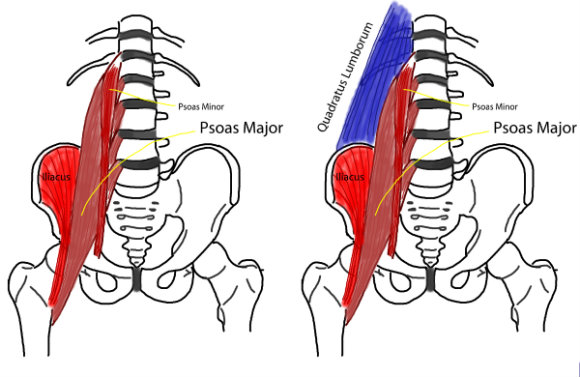
The Psoas, Your Breathing, and Your Swing
Back to the original questions. Your breathing is tied to the psoas, really? Actually, yes. The psoas ties directly into the posterior crura (back) of the diaphragm. Tight psoas? Restricted breathing, and vice versa. At the same time, that tight psoas that is inhibiting the diaphragm continues on up through the DFL into the anterior neck. Tightness there does two things:
- Constricts the windpipe and has a negative effect on the vocal chords. Huh, what does that mean? It means that is why we crocodile breathe through our nose. It is the only way to get the vocal cords to relax. Constricted vocal chords mean a constricted airway.
- Creates cervical flexion, which transfers to a forward head in order to maintain a level visual field. How many people who chicken neck their swings have anterior hip tightness? I would venture to say several.
The Psoas and Your Press
The effect of the psoas on lumbar position has been mentioned by many others—anterior tilted pelvis leads to bad back position—sound familiar? Half kneeling presses and tall kneeling presses are a great patch to this. They are both invaluable, but by themselves all they are doing is causing us to address the anterior hip, and not the entire DFL.
Enter the V-Sit (or straddle sit). This brings the adductors into play, forces the psoas to provide lumbar stability, and challenges the rest of the DFL, which then influences the arm lines and the spiral lines.
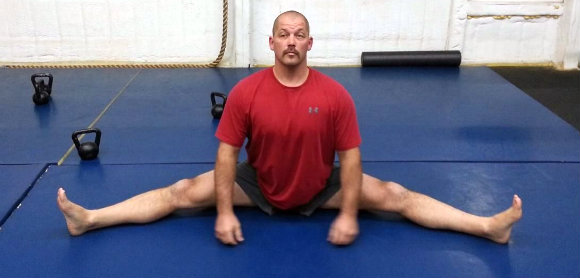
A great V-sit is knees fully extended, toes pointed to the ceiling, chest up and tall, and pelvis neutral to slightly forward. Now, press from a great V-sit and see where you feel it. Not being able to press half-bodyweight is often blamed on strength. But many times, strength isn’t the only issue—being able to press from a stable platform is the killer.
Note: With this it is often the opposite psoas that feeds into shoulder restrictions. Want more details? Complain to the powers that be until they ask me to write a follow-up or track me down at one of my Movement Restoration Workshops.
The Psoas and Your Squat
If the knees travel in as you descend into the squat, that is bad. What is worse is the resulting massive femoral internal rotation early in the squat, which affects pelvic stability and turns the squat into something atrocious.
As you squat with this poor pelvic stability, the body throws up the bat signal and in flies the Super-Psoas in an attempt to save the day by stabilizing the pelvis and lumbar spine. It turns on at the wrong times and through reciprocal inhibition the glutes dial back their activation, which robs you of hip extension strength. Spinal position is lost and glute activation is inhibited. Then, because of the pull from the psoas, the diaphragm is put into a position where the only way it can stabilize is by having us holding our breath. The result is we are left riding out the squat hoping we survive.
The fix? Address some trigger points (psoas, illiacus, quadratus lumborum, umbilicis, and any others along the DFL). Revisit the V-sit position and the V-sit press, and add in the lizard with external rotation and the four-point squat as demonstrated below.
Note: Before doing any of these, you have to do diaphragmatic breathing and soft tissue work, but that can be a whole other article.
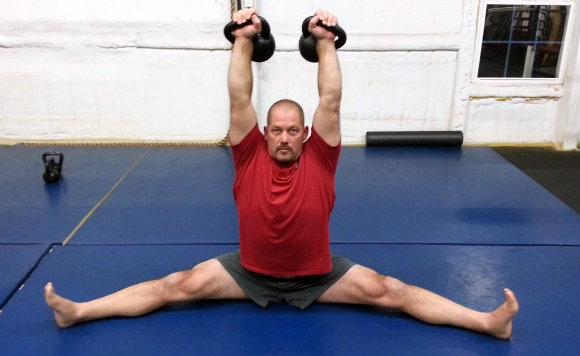
Interestingly, there are many things that can be done in the V-sit position to address stability and sneak in some mobility work. Master SFG Instructor Jeff O’Connor has a ton of amazing variations that I wish were mine, but I won’t claim them as my own. All are worthy of inclusion here, if we had enough space.
Disclaimer: The ilioratus lumborum is 100% a fictitious muscle I made up to make a point. You will not find it in any anatomy book—and if you do, that is a sign of a bad anatomy book.
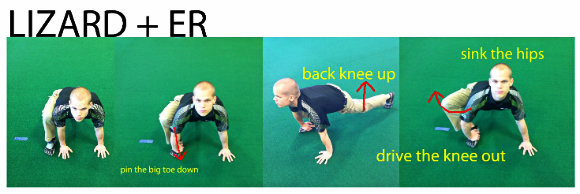
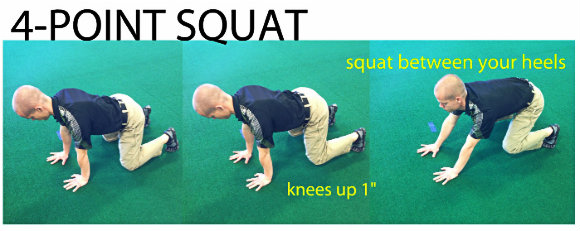
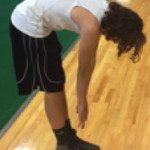
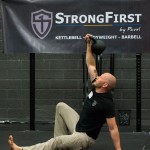




it is very helpful thank you for sharing
Hi,
Great info, getting the book, trained in NMT/MFR and work as a medic, my back/neck are definitely in need of this info, easy to let the days pass w/o exercises; now experiencing mild shortness of breath at times and heartburn. I dig in and release parts of the psoas/quadratus lumborum and its all better. So, my question is can the psoas issues – the DFL – cause heartburn/gerd symptoms?
Well. Finally someone nailed it. I’ve had poor posture for 45-55 years. I could never straighten my back correctly. Oh I’d straighten my back for a while, but never to the lanconic appearance I wanted to emulate, like the great looking kids in high school. It is/was because I never had the knowledge. You nailed it. The shoulders are very much tied to the psoas. So’s breathing. It may take me several tries to gain that relaxed breathing that every one has but I’m getting it. However, the psoas is the culprit dragging me down, and it is a big problem. It’s like the rope used to tie battleships to their mooring. Knowing this, keep stretching all of you with back problems. Keep stretching.
Awesome article. I will try the v-sit over head press with some customers and see how it goes!
Awesome read. As I was reading and looking at the solution fixes you recommend I realized these are primarily everything I have been doing and it has drastically increased my movement and performance. The V-Sit press is a money exercise!
Great read! I strained by psoas back in 2010 when I was in adrenal fatigue. I still deal with some spasms and tightness, but I have come across some activation movements to wake it up. The information you provided here I am going to add into my warm ups and active recovery days. Maybe I can finally knock this guy out of the park!
Jon
strengthathletes.com
Unfortunately, I missed this opportunity for CE’s, and I would like to be part of your mailing list so I’ll receive updates.
Thank you so much!